
by SylviaItaly | Nov 11, 2024 | Food, Italy, Running
Last week I spent some days in Rome. After months of studying for my last WSET Diploma exam I needed a short break.
Rome is fascinating, it is one of my favorite cities. I know the city quite well. It is a place where I have lived-in and have visited several times.

Ancient Rome is best known for its historical architecture, religion, cuisine, fashion and Renaissance works. Walking through Rome is like walking in one big open-air museum! Some iconic landmarks of Rome are the Colosseum, Trevi Fountain, the Vatican City and many more.

I always love going back. The place is the eternal city and must be seen once in life.
I was surprised by how many tourists visited Rome. They say that November is the least busy time to visit the city, but it was still crowded though. Maybe because the Italian took advantage of a long weekend “fare il ponte”. Fare il ponte is an Italian expression which means literally “to make a bridge”.
The last time when I visited Rome was for the the 10 km race “la corsa dei Santi” in on November 1, 2018 1. I can’t remember the time I have finished the race, but what I remember is that we ran inside the city along many historic monuments. Great experience.
It has been a while since I wrote a blog post. Maybe because I do not have many new ideas or fantasy anymore to write about. Since 2022 I am back in the Netherlands and my focus is mainly wine, work, study and running (of course). New “wine” projects are upcoming, so stay tuned about the latest updates.
But for now just enjoy reading this blog post about Rome. Discover what to do and where to eat the best “spaghetti alla carbonara”. Enjoy the new spots and the best places to run in it’s busy heavily trafficked city.
Jubilee 2025
The city is always packed with tourists, imagine with the Jubilee next year. The holy year will bring even bigger crowds to Rome. The Rome Jubilee 2025 festivities will take place from Christmas Eve December 24, 2024 until Epiphany festival in January 2026. It is called the “Pilgrims of Hope”. Jubilees take place every 25 years.
Today Rome is under construction for the Jubilee. Due to construction, work facades are hidden, roads are blocked and you can hardly see any monument. This causes inconveniences, not only for visitors but especially for the locals.
Monti
I discovered new culinary treasures between Termini station and Via dei Fori Imperiali. One of my favorite new spot is the Monti district. Monti is Rome’s funky, hipster area with new bars, clothing boutiques and restaurants. It is a great place for Roman food, good wines and delicious ice creams.
To get to Monti you need to take the blue metro line B. The nearest station is Cavour.

Colosseum
I did the Colosseum tour with an official tour guide. Colosseum is one of the most famous monument in Rome, perhaps in the world!

I booked a 2.5 hour tour with access to the Colosseum, Roman Forum and Palatine hill on a guided tour. The local guide was extremely informative and knowledgeable. It is well worth the money. A bit crowded but still a nice experience.
I have booked with GetYourGuide. Get Your Guide is an online marketplace for booking tours and activities in many places.
Vatican Museum
The best way to visit the Vatican Museum is with a guide. There are many tour options available but I booked the tour through the official website.

The Vatican was busy, as usual. It is a museum with 25000 visitors every day. The tour is 2 hours in the museum. Unfortunately, it is not possible to admire all the art work in such a short time. But our guide was good. We managed to see all the important parts of the museum. A must do.

Food and Drinks
I love eating everything that is Italian. I am privileged and lucky that I can and may eat all kinds of foods.

Traditional Roman foods are for example Spaghetti Carbonara, Pasta Amatriciana, Suppli, Carciofi alla Romana and “Maritozzo”.
Il Maritozzaro
Maritozzo is a filled freshly baked brioche filled with whipped cream. Honestly it was one of my favorite breakfasts. A hidden bar nearby the Trastevere station “il Maritozzaro” is worth the detour if you want to eat a good Maritozzo.
Via Ettore Rolli, 50
00153 Rome

Mercato Centrale
A nice discovery in the Termini area is the Mercato Centrale.


It is an ideal place to have a quick meal or snack before departure. It is pretty new. There are lots of choices including steak, burgers, pasta, pizza, sushi, desserts, craft beer, wine and gelato.

Several food stalls showcase the best produce from Rome, Italy and other countries.
Mercato Testaccio
Mercato di Testaccio is located in a more permanent structure. Here you can try some of the best street foodies.
Pizza al trancio is very popular, especially the classic pizza that is topped with ham, mushrooms, olives, artichoke and tomatoes. Yummy! This pizza is always priced by the total weight of the slices.

Another classic Roman Jewish dish is the fried artichoke “carciofi alla giudia”. They are seasoned with salt, pepper and a squeeze of lemon. This foodie is the perfect appetizer.
The Testaccio market is open Monday to Saturday from 7:00 am until 3:30 pm.
Milea Art & Food
Milea is a cocktail bar, bistrot in an art gallery in the heart of Rome (Trastevere). Such a great find during my stay in Rome! Cozy atmosphere to just relax and have a nice cocktail.

The Aperol Spritz is super delicious. This aperitif is made of Aperol, Prosecco/Spumante and soda water.
Ditirambo ristorante
This restaurant reminds me of a dinner I had with my father in 2009. Ditirambo is on a side street of the Campo de’ Fiori.
The classic Roman food and atmosphere never disappoints me. I can recommend the “fritto misto del Ditirambo”. This fried mix is popular and it includes fried cod, potato croquettes and meatballs.
After the antipasto comes the primo, the first course. Primo is usually pasta, risotto, gnocchi or sometimes soup.
I taglioni fatti in casa alla “gricia” con guanciale, carciofi and pecorino is a beautiful dish of homemade pasta with pork meat, artichoke and pecorino. Gricia means “white Amatriciana” or “carbonara without eggs”.

Buon appetito!
More restaurants
And here is a short list of more spots in Rome for Foodies:

- For the best-ever traditional Roman Carbonara
Location: Termini station
Da Nazzareno
Via Magenta 35/37
Roma
- Roman style pizza
Accasadi
Viale Opita 72
Roma

Accasadi refers to “a casa di” in Italian. Like Antonietta describes: “Let’s go to Sylvia’s place.”
Location: Numidio Quadrato (metro line A)

Running
When I am on a holiday I love to run. Running helps me to stay in shape, physically and mentally. But it is also a way to experience the culture of a new place. It is a different way of sightseeing.
Running gear doesn’t occupy much space in my luggage. I always bring one pair of running shoes with me and the clothes I normally wear to run. Wherever I go.

The best place to run is along the Tiber river. The river flows through the center and provides one of the best running routes in Rome.
Metro line B: Basilca San Paolo, start Ponte Gugliemo Marconi
In the historical centre you can run easily because the main sights are achievable. To avoid traffic you need to go early. But personally I prefer running along the Tiber or in the Villa Borghese area. The park is full of beautiful paths.
Start from Piazza del Popolo and enjoy! How do I get there? Metro line A: Spagna or Flaminio.

Enjoy Rome!
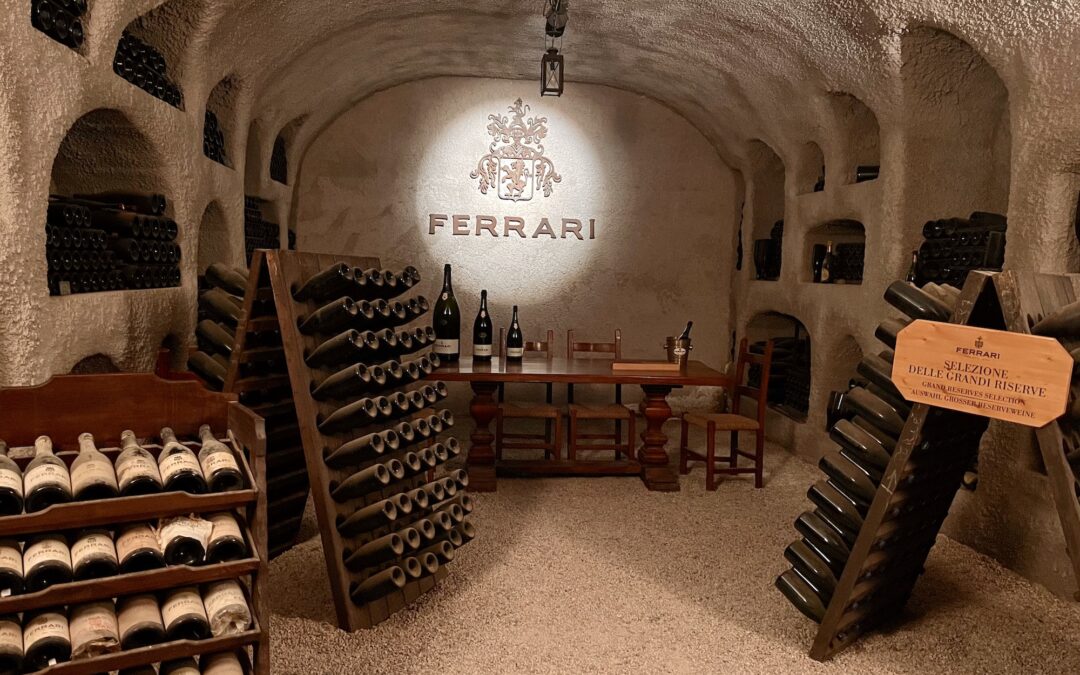
by SylviaItaly | Dec 27, 2023 | Italian wines, Italy, Wine study, Wine tasting
Ferrari Trentodoc is an important brand that needs to be explained.
The brand does not refer to the the Ferrari car company. Ferrari Trentodoc is Italy’s leading Metodo Classico sparkling wine producer and it is the most popular Trento DOC wine.
Ferrari is a historic label appreciated all over the world.
Ferrari Trentodoc
Ferrari Trento was founded in 1902 by Giulio Ferrari. He was an enologist, nobleman and native of the Trentino region. He was born in Calceranica al Lago in 1879.
At the end of the 19th century Giulio Ferrari spent time in the Champagne area for his study viticulture in Montpellier. Giulio was convinced that Trentino was suitable for the production of sparkling wines.
Why?
Because of the ideal climate and local mountainous terroir for Chardonnay grapes. He even brought back the Champagne region’s Chardonnay grape to plant in his own Italian vineyards.

When having planted Chardonnay grapes in Trentino to make the sparkling wine, the brand Ferrari was born. Giulio Ferrari wanted to make sparkling wines from exceptional quality!
Lunelli
Since 1952 the “large” Lunelli family runs this business. Merchant Bruno Lunelli owned a wine shop in Trento, he was a good friend of Giulio Ferrari.
Giulio had no children and one day he decided to sell the business onto Bruno. In that time the production was less than 1000 bottles per year. Now the production is about 5 million bottles of Ferrari Trentodoc sparkling wines.
Giulio Ferrari died in Trento in 1965.
Today the third generation of Lunelli is keeping the Ferrari dream alive. In the 1980’s, alongside its Trentodoc, Lunelli started bottling water (brand Surgiva) and making still and sparkling wines in other Italian regions:
- Trento wines (Tenuta Margon in Trentino)
- Umbrian wines (Castelbuono in Bevagna)
- Tuscany wines (Podernovo in Monticiano)
- Prosecco Superiore (Bisol1542 in Conegliano Valdobbiadene Prosecco DOCG)

Podium sponsor
Ferrari is luxury wine, it is a symbol of the Italian Art of Living and accompanies the most important moments in the world of institutions, culture, entertainment and sport.
To be podium sponsor of the Formula 1 Matteo Lunelli has signed a partnership with Formula 1 to celebrate victories of the best pilots.
Matteo Lunelli is CEO & president of Ferrari Trento.
The Formula 1 podium toast is a wine made from 100% Chardonnay and available in a limited edition. The drivers present the wines with a Jeroboam 3 liter bottle of Ferrari Trentodoc.
Ferrari Trentodoc is also official partner of Juventus and the Tennis Tournament in Rome.
Cheers!



Grape growing and wine making
Ferrari has its own vineyards (about 100 ha) and purchase grapes from growers to be transformed into a varied range of sparkling wines: Non Vintage, Vintage, Riserva and Prestige Cuvée.

Metodo Classico, traditional method, stands for second fermentation in the bottle. Traditional method is a prestigious method for producing sparkling wine.
The base wine in the bottle matures in the bottle by adding the liqeur de tirage. This process is similar to making Champagne. Prosecco, on the other hand, has the second fermentation in tank.

Trentodoc is a trademarked name and falls under the appellation Trento DOC. The Trentodoc trademark was created in 2007. The two O’s in the trademarked name are designed to be reminiscent of the process of riddling.
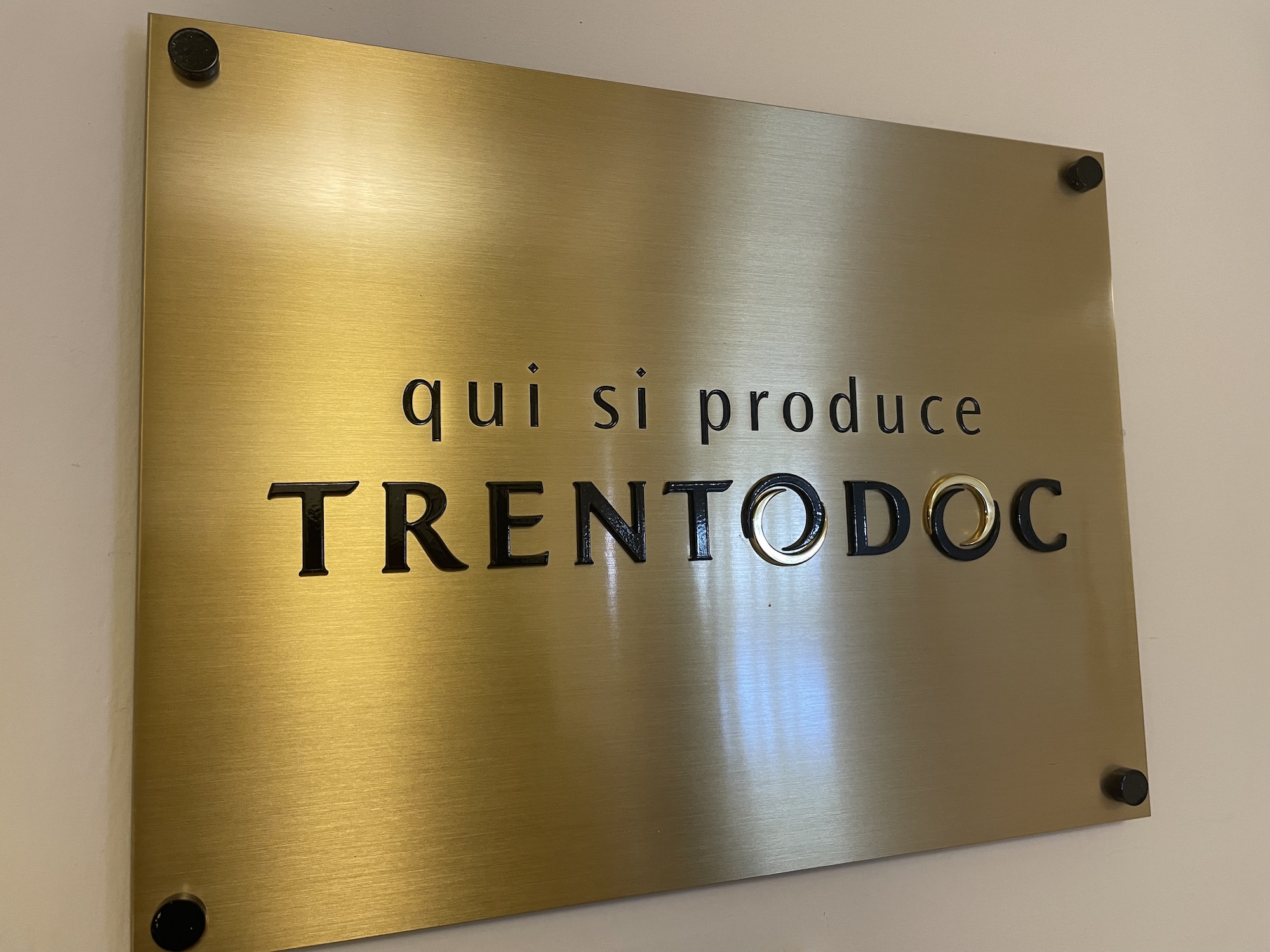
The grapes they use are mainly Chardonnay, but also Pinot Noir is used for some labels. The DOC regulations require the producers the wine to be made as follows:
- handpicking the grapes (no machine harvesting)
- using only grapes from Trentino (Chardonnay, Pinot Noir, Pinot Meunier and Pinot Blanc)
- second fermentation in bottle (not in tank)
- yeast contact for a long maturing process (normally most wine makers leave the wines on the lees for longer for more autolytic characteristics)
Great vintages Ferrari tour
A visit to Ferrari includes learning about its history. Walking through the silent cellars and seeing places where the wines are produced is a wonderful experience.



In the tasting room you will get a taste from the products (in this case 3 reserve sparkling wines).
I did the Great Vintages tour. The tour is in a beautiful setting and takes about 1-2 hours. It is a must do if you are in the area!
We tasted the following wines:
- Ferrari Riserva Lunelli Trentodoc
- Giulio Ferrare Riserva del Fondatore Trendodoc
- Giuio Ferrari Rosé Trentodoc


The winery is along the river Adige and the A22 highway (Brennero). You can’t miss it.
Enjoy the wines!
Ferrari Fratelli Lunelli
Via del Ponte, 15
38123 Trento (TN)
Italië


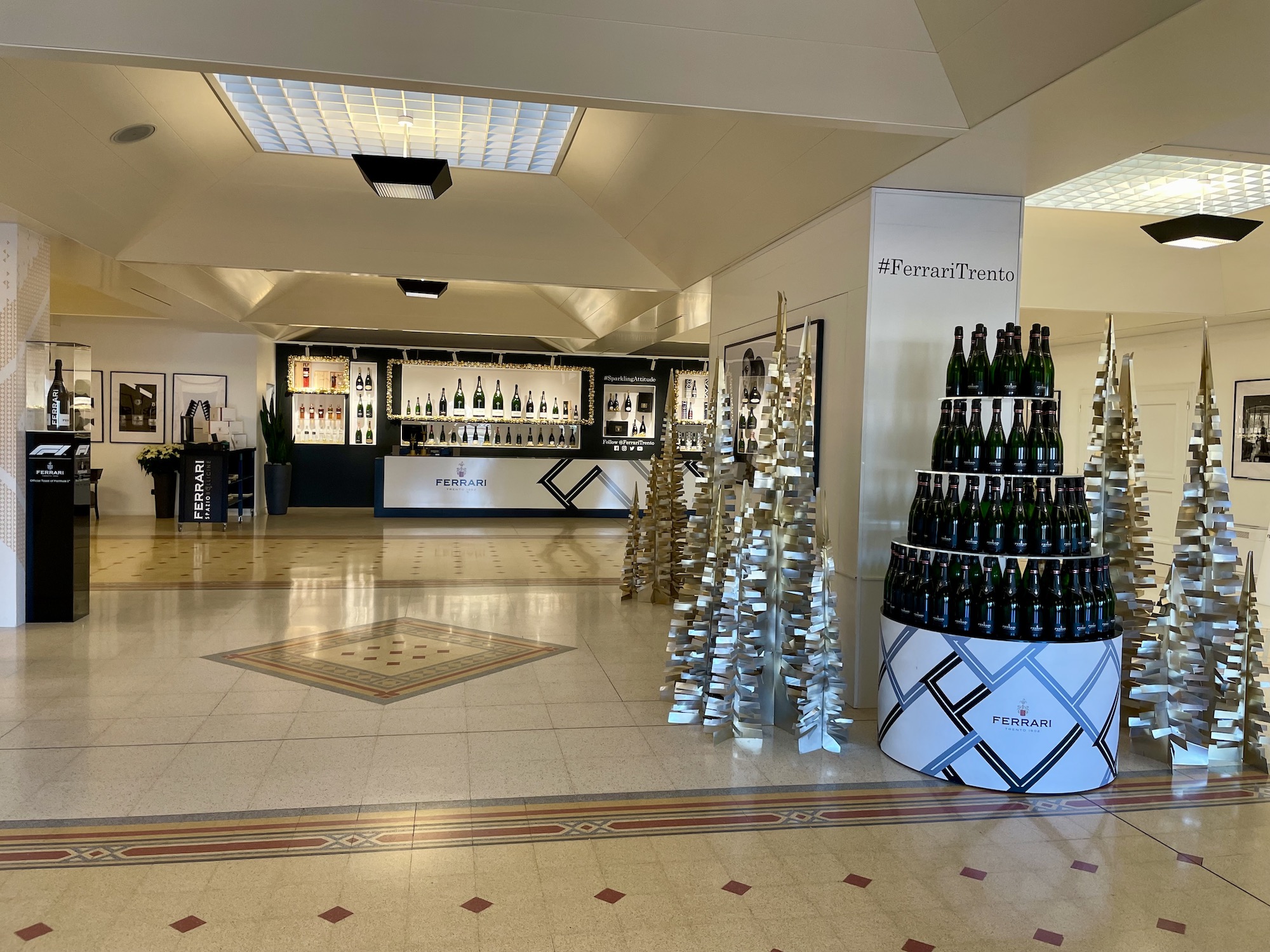

by SylviaItaly | Feb 5, 2023 | Italy, Veneto
The Carnival of Venice (Carnevale di Venezia) is different to carnivals which take place in The Netherlands for instance. It is one of the most famous carnivals around the world. The celebration takes place over 10 days. This year, the carnival in Venice will take place between February 4 and February 21.

Venetian costumes and masks
Many people use the Carnival as an opportunity to dress up in wonderful, colorful outfits. Most costumes are historical and handmade in the ateliers of the city Venice. There are costumes shops all over that rent costumes.
Each costume is one of a kind item, to guarantee its uniqueness. They are stylish, luxurious and noble.

It is not necessary to wear costumes at Venice Carnival. Many tourists opt for a mask. In Venice are many mask shops selling amazing Venetian masks during carnival and most visitors will buy one. Masks are part of the Venetian tradition. They have been used on many other occasions in the past.
Masks are made of papier-mâché, velvet and lace, decorated with gold and silver leaves, fabrics, jewels, colors, crystal and leather. There are different styles of masks in Venice:
- Bautta – the traditional Venetian Carnival mask –
- Moretta – a black mask worn by women –
- Gnaga – a mask traditionally worn by homosexual men –

Piazza San Marco
“Il salotto d’Europa a Venezia”. Piazza San Marco is one of the most fascinating salon in the world! Saint Mark’s Square is famous for its unique monuments, beautiful buildings and wonderful basilica.
Piazza San Marco is a great spot to view the Venice Carnival Costumes. There is also a daily parade featuring the best costumed participants. The parade in Saint Mark’s Square is a free event and ideal for photo opportunities.


Carnevale di Venezia is a unique experience. Venice is a magical lagoon city, a city of romance, beauty and historical importance. Venice is not like any other city in Italy. During the Carnival period the atmosphere creates glamorous costume balls, creative contests, regattas, water parades and feasts.
Caffè Florian
Caffè Florian in Piazza San Marco plays a central role in the Venice Carnival. It is the oldest caffè house in Europe and it attracts many visitors all over the world during the Venice Carnival. It is the place to be!
Foodie
Carnival in Venice is not only masks and costumes, a big part of the celebration are the fried pastries, frittelle and the crostoli. During the Carnival, only at this time of the year, you can taste the typical Venetian goodies. This fried dish pairs excellent with the cold weather and the festive mood of Carnival.

And what wine is best to drink with frittelle? Prosecco! Prosecco Brut or Prosecco Extra Dry. The little sweetness works perfect with the frittelle. Cheers!
Available prosecco in our stock Toffoli Prosecco Superiore DOCG
My Carnival Experience in Venice
I have visited Venice during Carnival season multiple times. Venice is always breathtaking but during Carnival your view of culture and tradition will change. The extraordinary costumes and the elaborate masks make Venice’s Carnival a true Venetian experience. There is a huge amount to see and to do. For more information visit the website “Carnevale di Venezia“.

Happy Carnival everyone and buon Martedi Grasso (Mardi Grass) da Venezia!


by SylviaItaly | Feb 20, 2022 | Italian wines, Italy, Tuscany
We are at the end of the online course DipWSET4 – D1.
Uffa..

It were intense weeks with lots of posts, research, questions, wine tastings and group activities.
Many projects required a lot of effort!

In the first week of our course we needed to work alone on our vineyard establishment proposal. I choose for the wine area Bolgheri in Tuscany. This is my proposal I have submitted in the first week of our wine course.
Happy reading!
Bolgheri
I choose the territory of Bolgheri (Livorno) along the Etruscan coast, at the foot of the gentle Tuscan hills and a few miles from the sea.

The climate along the coast in Tuscany is more maritime than central Tuscany. The summers are dry, sunny and breezy. The weather is influenced by the sea. Temperatures in winter time are around 8-10 degrees, and reach rarely zero or less.
The sea and Apennine mountains moderate the temperatures in summer period. The driest months in Tuscany are July and August.
Bolgheri Rosso DOC
Bolgheri Rosso DOC is a blend of black grape varieties. The red wine can be made in different styles. I will plant the following grapes: Cabernet Sauvignon, Merlot, Syrah and Sangiovese.

The black grape varieties need sunlight and heat to ripen fully. The grapes do not ripen at the same time. Merlot ripens earlier than Cabernet Sauvignon and Sangiovese for instance. The harvest of the grapes is spread out.

Vine training system black grape varieties: cane pruned (single guyot), cordon trained. The vine’s cane and shoots are tied to the trellis for light and air circulation. Summer pruning will hardly take place as the leaves protect the berries from sunburn in (warm) summer conditions.
The soil is calcareous and contains a mix of rocks. There is a good drainage, which is important for grape growing. The altitude of the vineyards are about 100 – 400 m above sea level and the slopes are facing southwest.
The wine is full bodied with ripe red and black fruits, medium-high tannin, high acidity and high alcohol. Long aftertaste.
Suited for aging.

Super Tuscan wines have gained popularity in Italy and abroad since the 20th century. Especially the red wines. The wines are prestigious and sometimes also very expensive.
The average price for this wine is Euro 25.00*.
*average price of Sylvia Italy’s Rosso wine – not available in my shop.
Bolgheri Rosato DOC
The black grape varieties used for the rosé are Syrah, Merlot and Sangiovese. This wine is a blend and pairs good with fish dishes. For example with the local cacciucco from Livorno.
Bolgheri Bianco DOC
For a white wine from the region I will plant Vermentino grapes. Vermentino is often vinified as a single variety but can also be blended with other white grape varieties such as Trebbiano Toscano.

The vine training system for the Vermentino grapes are cane pruned (guyot). The sea has a positive influence and gives Vermentino a mineral and aromatic character.
The Vermentino wine is an appetizer wine and pairs excellent with local fish dishes.

For both young wines the average price per bottle is Euro 13.00-15.00*.
*average price of Sylvia Italy’s Bianco wine – not available in my shop.
Super Tuscan wines are produced also in other places in Tuscany, but Bolgheri is the birthplace of this wonderful wine.
Alla salute!

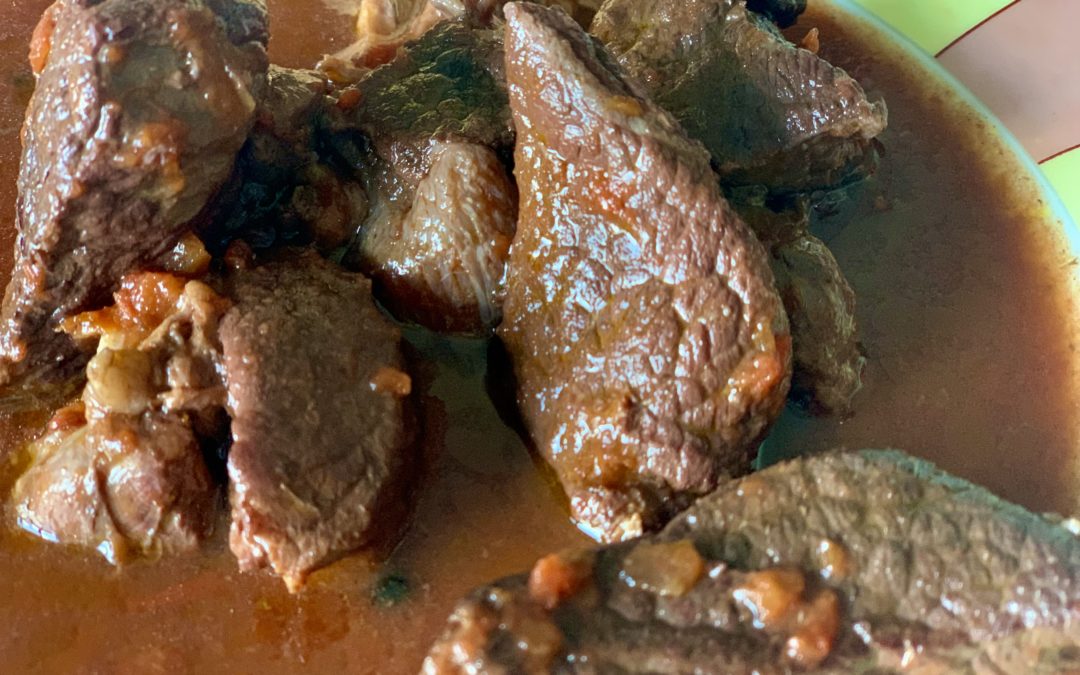
by SylviaItaly | Feb 13, 2022 | Food, Italy, Recipes, Tuscany
Peposo is a traditional Tuscan pepper beef stew. It is one of my favorite Italian dishes.
I know, I have many favourite dishes, but my peposo recipe brings you right away to Florence!

Peposo is rich in flavour. It really has a delicious spicy kick from the black pepper, hence the name “peposo”.
This -500 years- old dish is easy to make. Peposo is still popular across Tuscany. It originally comes from the village Impruneta, a small town in the Tuscan hills. The former name of the recipe is “Peposo alla Fornacina”, but today it is called “Peposo”.
Recipe peposo
Sylvia Italy’s peposo is made with beef chuck for stew, NO garlic*, whole black pepper corns, black powder pepper, salt, olive oil, tomato sauce to give the sauce a bit body, and red Tuscan wine: Rosso di Montepulciano DOC.
That’s it!

*Peposo without garlic tastes equally good. I eat onions and garlic, but sometimes I prefer avoiding it. I don’t like the bad breath and lingering aftertaste in my mouth.
Ingredients:
Serves 2 people
- 300 g boneless beef chuck for stew
- a handful of black pepper corns
- black pepper powder
- salt
- 1/4 liter of red wine (Chianti or Rosso di Montepulciano)
- tomato sauce*
*The original recipe peposo is more likely not to be made with tomato sauce.


Preparation
For gentle cooking, like stews, I always use my cast Creuset iron pot.

Heat the olive oil in a pot over a medium-high heat and brown the beef for a minute of 3. Add the red wine, salt, pepper and the tomato sauce.

Cover the pot, lower the heat and cook the peposo for approximately 3 hours. Check it often and give it a stir occasionally. It is important that the meat remains covered in wine and adding water if necessary.
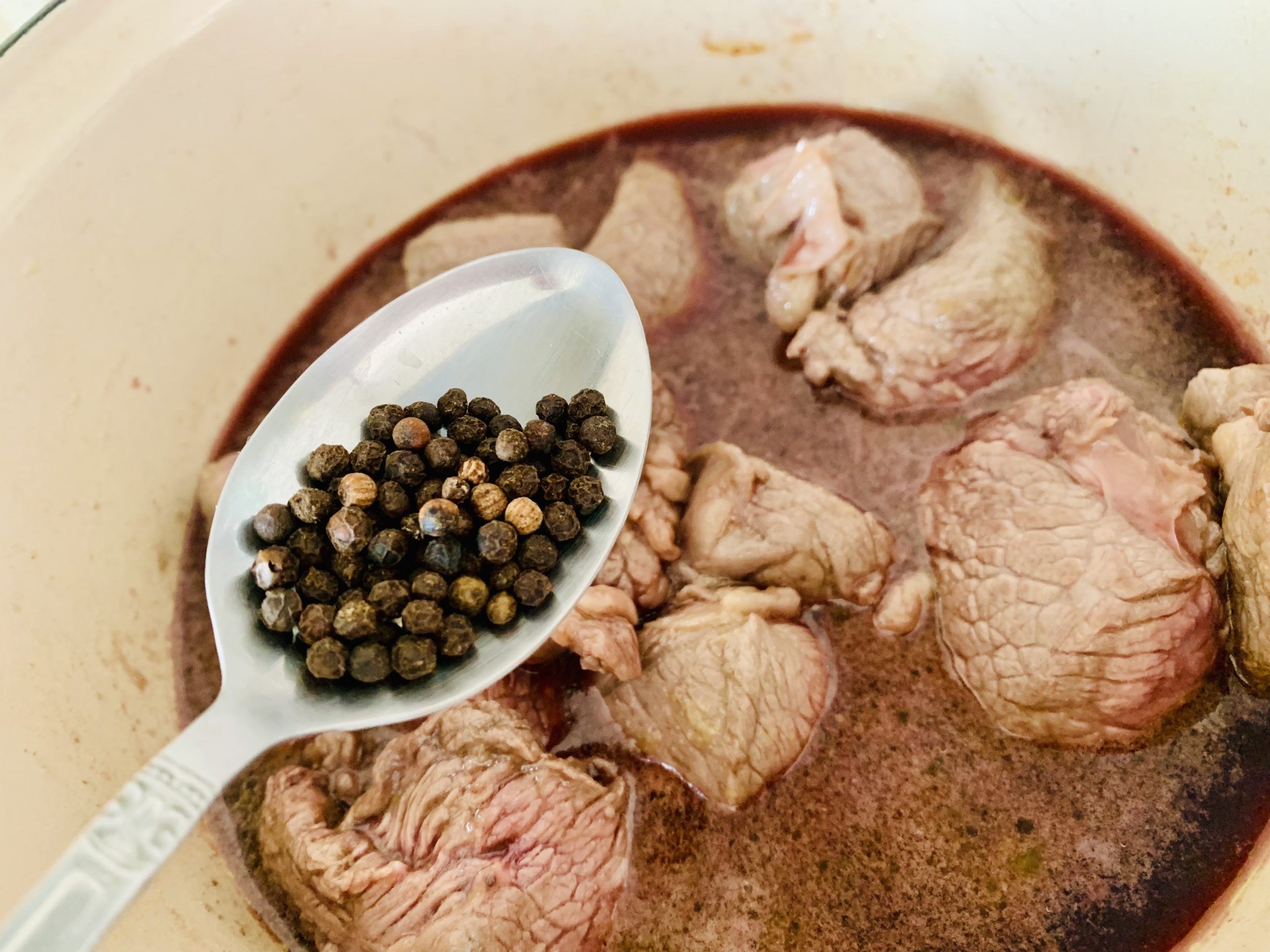


It says that cooking longer than needed doesn’t mean tender meat, but personally I prefer cooking it long.
When the peposo is ready, the meat should be tender (I love it when the meat is falling apart..yummy) and the red wine should have reduced to a sauce.
Season with more pepper if desired and serve warm on traditionally sliced bread (preferably Tuscan bread without salt) or polenta.
Buon appetito!

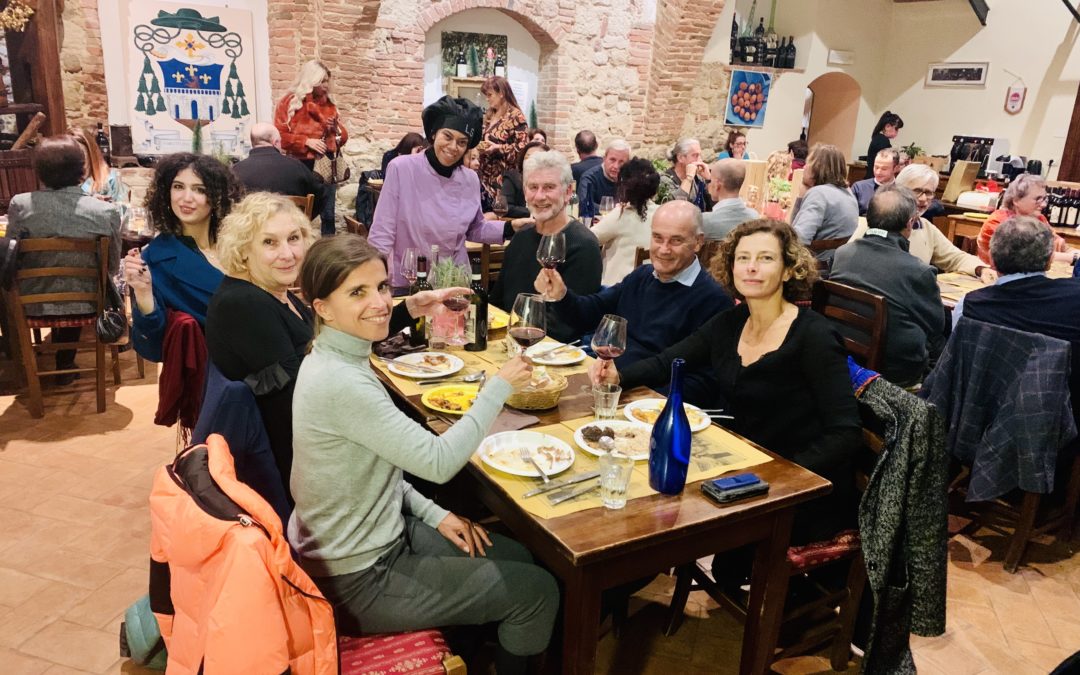
by SylviaItaly | Jan 15, 2022 | Food, Italy, Tuscany
Cantina Gattavecchi organizes a yearly fundraising dinner for the Breast Cancer Foundation “Io Sempre Donna“. Io Sempre Donna is in Chianciano Terme, a small village nearby Montepulciano.
Usually this annual charity dinner offers food from all over the world. But this time chef Lilian Gattavecchi decided to offer an Italian night with food from different regions, such as: Trentino – Alto Adige, Veneto, Calabria, Sardegna, Liguria, Toscana, Piemonte, Sicilia and Lombardia.
The wines they served were local wines from winery Gattavecchi: Toscana IGT red and white; Rosso di Montepulciano DOC; Vino Nobile di Montepulciano DOCG and Vino Santo di Montepulciano DOC.
The total amount of the dinner was euro 30.00 per person (including bread, water and wine).
Io Sempre Donna
Breast cancer is the second most common cancer among women. Io Sempre Donna helps women who are dealing with breast cancer and are in need of emotional support.
In Italy women who are 50 years or older (until 69) have screenings every 2 years. Women with a family history of breast cancer have a routine screening mammograms every year.
Io Sempre Donna means literally “Me always a woman”. Women diagnosed with breast cancer face a difficult time. Io Sempre Donna assist and support them before, during and after hard times.
Menu charity dinner
Antipasti
Toscana – nero toscano (chicken liver)
Calabria – BOMBA calabra (chilly peppers)
Umbria – salame al tartufo e crostini funghi mozzarella
Sardegna – pecorino cheese
Veneto – baccalà mantecato (stockfish)

Primi piatti
Trentino Alto Adige – canederli in brodo
Campania – scialatelli alla sorrentina
Piemonte – la paniscia alla novarese



Secondo piatti
Lombardia – polenta con le quaglie (quail)
Toscana – peposo (red wine beef stew with lots of pepper)


Contorni
Liguria – patate al forno con i funghi
Sicilia – melanzane (eggplants)
Toscana – fagioli bianchi (white beans)

Dolci
Toscana – crostata / biscotti al Vino Nobile
Lombardia – tiramisù

Conclusion
The food was fabulous. We were a bit too full at the end but it was really amazing. A great experience!












































































